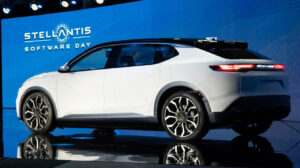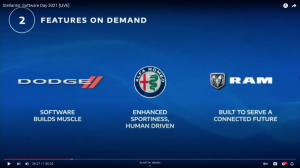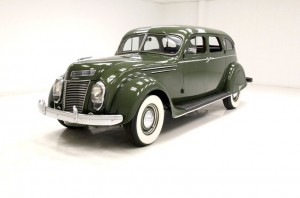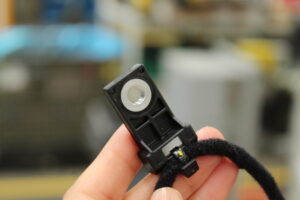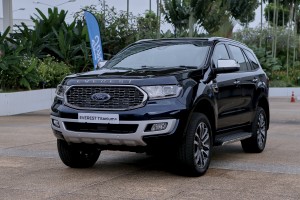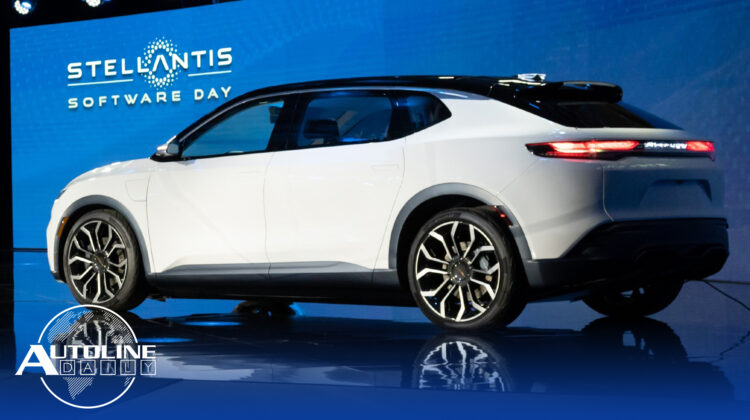
Listen to “AD #3219 – There's Hope for the Chrysler Brand; Automakers Go to the Source for Chips; GM Opens 1st BrightDrop Dealer” on Spreaker.
Follow us on social media:
Runtime: 9:19
0:07 Chrysler Airflow Concept Showcases New Technology
1:00 Stellantis Will Improve Vehicle Character w/ OTAs
1:33 Chrysler Dips Into Its Past for Concept Name
2:35 Automakers Going Right to the Source for Chips
3:38 GM Opens 1st BrightDrop Dealership
4:11 Hyundai Announces EV Investment for India
4:30 Hyundai & Kia EV Ranges Revealed
5:07 Renault ZOE Earns 0-Star Crash Rating
6:12 Ford Makes Parts from Recycled Ocean Plastic
6:51 Ford Invests in Thailand
7:26 NEV Sales Soar in China
Visit our sponsors to thank them for their support of Autoline Daily: Bridgestone, Intrepid Control Systems and Schaeffler.
This is Autoline Daily, the show dedicated to enthusiasts of the global automotive industry.
CHRYSLER AIRFLOW CONCEPT SHOWCASES NEW TECHNOLOGY
Looks like there could be hope for the Chrysler brand after all. Yesterday Stellantis laid out its plans to become a software powerhouse and generate €20 billion a year in revenue from monetizing data and selling subscription services. To showcase these technologies it rolled out a concept car called the Chrysler Airflow. It’s a 4-door electric CUV with the instrument panel decked out with screens available to drivers and passengers. What we found so interesting is that Stellantis decided to use the Chrysler brand to showcase this technology. Chrysler, as you know, is down to only two models. The minivan and the 300 sedan. We wondered if the brand was going to survive. So this Airflow concept suggests that the Chrysler brand is going to get a better lineup of vehicles.
STELLANTIS WILL IMPROVE BRANDS WITH OTA UPDATES
And as part of its software onslaught, Stellantis wants to improve the character of its brands with over-the-air updates. It is separating hardware development from software development to make changes more quickly. Though the company didn’t reveal much, it said Dodge owners would be able to pay for performance updates that would instantly give them more horsepower. Alfa Romeo owners would get updates that enhance the sportiness of their cars. And Ram owners would get updates to increase the payload capability of their trucks.
CHRYSLER DIPS INTO ITS PAST FOR CONCEPT NAME
OK, back to that Airflow for a minute. Or, at least the name. No doubt most of you know that the name comes from the Chrysler Airflow that was in production from 1934 to 1937. It tried to capture the trend in Art Deco design and streamlining. But the public thought it was an ugly car, so it never caught on, and they sold less than 30,000 of them.
AUTOMAKERS GOING RIGHT TO THE SOURCE FOR CHIPS
Here’s another wrinkle to the chip shortage that we haven’t covered much. Automakers were relying on their Tier 1 suppliers to secure chips for them, but as we know, for a number of reasons, that didn’t happen. And now Stellantis CEO Carlos Tavares says it’s hurting the relationship between automakers and suppliers. So, automakers are bypassing their Tier 1 suppliers and going right to the source: the chip makers themselves. They’re signing long-term contracts to make sure they don’t run short again. Yesterday, Stellantis announced a new deal with Foxconn and today BMW announced it’s working directly with two chip makers, INOVA Semiconductors and GlobalFoundries. You may remember Ford also recently signed a deal with GlobalFoundries. BMW says its chip deals will help it secure several million semiconductors per year and they’re going to be used in the all-electric iX SUV, which went on sale last month.
GM OPENS 1ST BRIGHTDROP DEALERSHIP
General Motors just took a big step forward with its BrightDrop electric commercial van business by opening its first dealership in California, located just outside of Los Angeles. But what’s fascinating to us is GM is not using existing Chevrolet or GMC dealerships for BrightDrop. EVen though GM dealers can apply, Brightdrop will use standalone facilities and a separate franchise agreement. GM plans to deliver the first BrightDrop vans to customers this month.
HYUNDAI INVESTING IN INDIA
India is in the news again today. Hyundai announced it will launch 6 electric vehicles there by 2028, and the first will hit the market next year. EVs account for less than 1% of sales in India, but the country wants to boost that to 30% by the end of the decade.
HYUNDAI & KIA EV RANGES REVEALED
Speaking of Hyundai’s EVs, the IONIQ 5 is being rated at an EPA estimated 303 miles of range for single motor RWD versions. Dual motors and AWD drive knock that figure down to 256 miles. On the flip side, the Kia EV6, which shares the exact same platform and powertrain, is rated at 310 miles for rear-drive models and 274 miles with AWD. Those figures are competitive with other new electric crossovers, like the Tesla Model Y and Ford Mustang Mach-E.
RENAULT ZOE EARNS 0-STAR CRASH RATING
But not all EVs are created equal when it comes to safety. The Euro NCAP crash tested several new models and the results are quite stark. The BMW iX, Ford Mustang Mach-E, Mercedes EQS and even the NIO ES8 received an overall 5-star rating. But vehicles, like the entry-level Dacia Spring EV, received a 1-star, while the Renault ZOE couldn’t even muster a single star. Back in 2013, the ZOE earned a 5-star rating, so it goes to show the tests have gotten tougher over time. Even so, the Euro NCAP says it’s only given out a 0-star rating two other times.
FORD MAKING PARTS FROM RECYCLED OCEAN PLASTIC
Say, what if automakers could get the raw materials to make cars simply by fishing garbage out of the oceans? Ford says it’s the first automaker to make parts made from 100% recycled ocean plastic. The first application is the wire harness clips on the Bronco Sport. Ford says it’s just as strong and durable as plastics made from oil-based parts but the recycled plastic is 10% cheaper and needs less energy to produce. In the future, Ford plans to use more parts made from recycled ocean plastic, including transmission brackets, wire shields and floor side rails.
FORD MAKES BIG INVESTMENT IN THAILAND
And in other Ford news, the automaker announced it’s investing $900 million in Thailand to build the next-gen Ranger and Everest SUV. The money will be used to update two plants and improve the supply chain in the country. The two models will be sold in Thailand and exported to other markets. The new Ranger launches in the middle of next year but Ford did not reveal when the new Everest will launch. And with the popularity of the Everest in other markets, we wonder if it’s possible Ford will bring the Everest to the U.S.? Let us know what you think?
NEV SALES SOAR IN CHINA
Sales of New Energy Vehicles are soaring in China. That includes BEVs, PHEVs and hybrids. The China Passenger Car Association says NEV sales were up 121% last month compared to a year ago and that China is on track to sell 3.3 million NEVs by year end. Tesla’s production in China dropped slightly from October, but it still sells more BEVs there than anyone else. Tesla made almost 53,000 Model Ys and 3s in Shanghai and exported just over 21,000 of them to other countries, mainly in Europe.
Elon Musk says the U.S. government should drop all EV subsidies. In fact, he wants Congress to drop President Biden’s infrastructure plan, saying the federal budget deficit is insane. But the LA Times points out that Mr. Musk received nearly $5 billion in government subsidies for Tesla, Space X and Solar City. So, is the attack on subsidies wise words from a business tycoon, or the height of hypocrisy? That’s one of the top topics for Autoline After Hours tomorrow. So join John and Gary for some of the best insights into what’s going on in the automotive industry.
And that brings us to the end of today’s show. Thanks for joining us and we’ll be right back here again tomorrow.
Thanks to our partner for embedding Autoline Daily on its website: WardsAuto.com
Seamus and Sean McElroy cover the latest news in the automotive industry for Autoline Daily.




